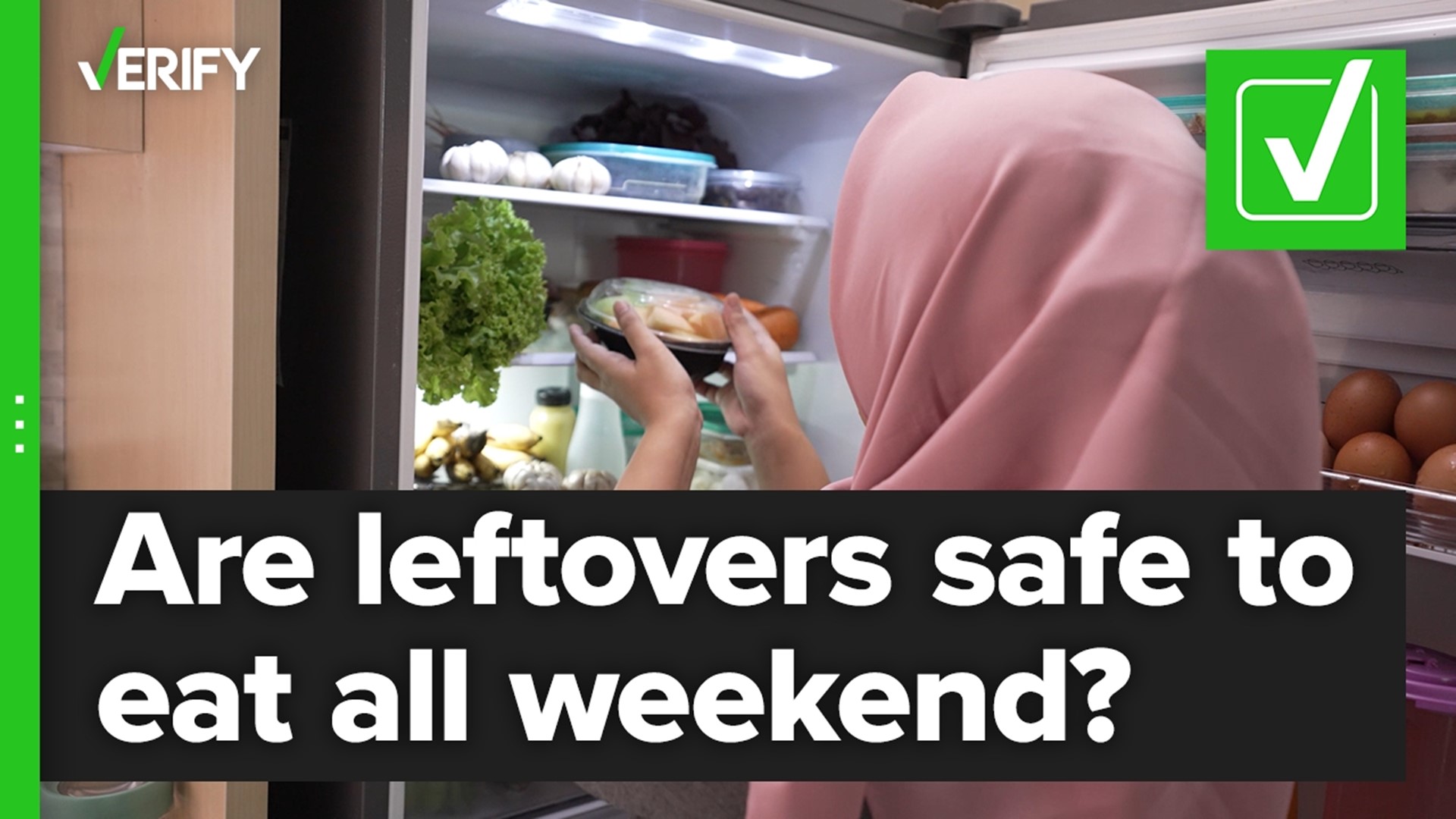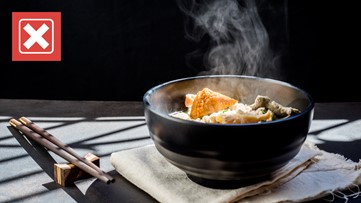The centerpiece of the Thanksgiving celebration for many families across the United States is the feast. But once the annual meal is finished, a question families face is what to do with the leftovers: eat them or throw them out?
Google Trends data show searches for how long Thanksgiving leftovers last have spiked in the days leading up to the holiday. One YouTube video with more than 600,000 views says people should eat refrigerated leftovers within four days.
THE QUESTION
Are refrigerated Thanksgiving leftovers safe to eat for four days?
THE SOURCES
- U.S. Department of Agriculture (USDA)
- Mayo Clinic
- Centers for Disease Control and Prevention (CDC)
- Minh Duong, Ph.D., postdoctoral associate at Virginia Tech’s College of Agriculture and Life Sciences
THE ANSWER
Yes, refrigerated Thanksgiving leftovers are safe to eat for four days.
WHAT WE FOUND
The Mayo Clinic says refrigerated leftovers, regardless of whether it’s Thanksgiving or not, should be eaten within three to four days.
“After that, the risk of food poisoning increases,” the medical organization says.
The U.S. Department of Agriculture (USDA) has food safety tips specifically for the Thanksgiving holiday. It advises people that the Monday after Thanksgiving is the last day to safely eat leftovers.
Minh Duong, a postdoctoral associate of food safety at Virginia Tech, says food sitting in the refrigerator for more than four days allows bacteria, called spoilage microorganisms, to build up, which is why leftovers can sometimes have a rank smell or look unappealing when stored for too long.
But bacteria don’t always change the appearance or smell of leftovers, according to the Mayo Clinic. So, even if the food still looks or smells normal, it’s best to avoid eating leftovers if it’s been more than four days.
“When in doubt, throw it out,” said Duong. “It's not worth making yourself sick or your loved ones sick just to have that extra Thanksgiving meal.”
The Centers for Disease Control and Prevention (CDC) notes that a common food poisoning bacterium, called Clostridium perfringens, is reported more often in November and December.
“Many of these outbreaks have been linked to foods commonly served during the holidays, such as turkey and roast beef,” the CDC says.
The safety of leftovers is also dependent on when the food is stored and how it is prepared when served again. The USDA says it’s best to refrigerate perishable foods in a shallow container within two hours of coming out of the oven or refrigerator, even if it’s still hot.
“After two hours, perishable food enters the ‘Danger Zone’ (between 40 F and 140 F), where bacteria can multiply quickly and cause food to become unsafe,” the agency says.
Then, when eating leftovers, the USDA says it’s important to reheat the food to at least 165 F and reheat sauces and gravies to a rolling boil.
For people who are unsure about whether they’ll be able to eat leftovers by the Monday after Thanksgiving, there’s the option of freezing.
“If you want to keep leftovers longer, freeze them within that four-day period,” the USDA recommends. “Frozen food stays safe indefinitely, though the quality may decrease over time (best quality if eaten within six months).”
Refrigerating or freezing isn’t an all-or-nothing choice. There’s always the option to do both – refrigerate what can be eaten within the four-day window and freeze the rest.
The USDA has a chat line for anyone with questions about food safety.
This story is also available in Spanish / Lee este artículo también en español: Sí, las sobras de Acción de Gracias se pueden consumir hasta por 4 días










